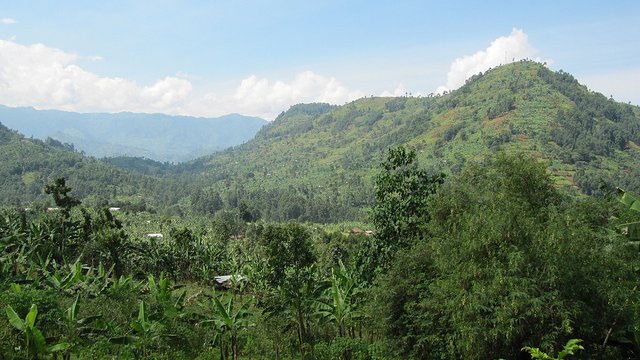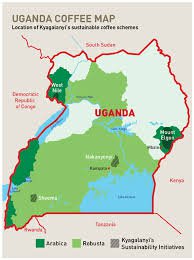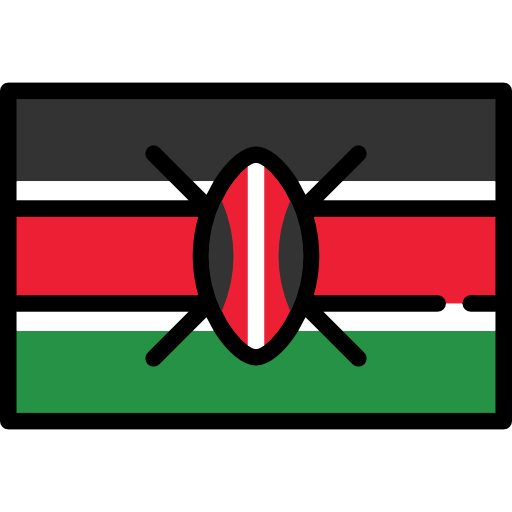Coffee in Uganda

COFFEE REGIONS
Robusta Coffee unlike in many other countries, it is grown at a relatively high altitudes of 1,100 up to 1,500 meters above sea level in the areas of Central, Eastern, Western and South Western Uganda.
Arabica production occurs between 1,500 and 2,300 metres above sea level primarily in the Mount Elgon region in the East, the Rwenzori Mountains in the west, the Kabale region in the Southwest, and most recently in the North East.
The ratio of Arabica to Robusta coffee produced in Uganda is currently approximately 1:4.
A BIT OF HISTORY
CHALLENGES FOR COFFEE PRODUCTION IN UGANDA
Diagnosis
- Lack of organization at farming level
It is estimated that only 15% of smallholder coffee farmers are members of a group, association, organisation or cooperative which enable them to benefit from economies of scale, collective marketing and to increase their productivity and access to markets.
- Low usage of technologies and low level of investment
Low usage of value addition technologies at farmer levels and low level of investment in medium and large-scale farming. Coffee is perceived to be an unattractive commercial investment. Producers have limited capacity to absorb shocks e.g. price volatility.
- Low use of agricultural inputs due to their high cost and to the very limited access to credit for smallholder farmers
At the moment, coffee farmers make little use of chemical and organic fertilisers, and carry out almost no pruning at all. Effective use of high quality inputs is a key condition for sustainable increases in productivity. Farmers depend on middlemen who fill the gap but charge high rates. Stumping and rejuvenation, as well as upgrading processing machinery and tools, are also important but require long-term credit lines. Access to credit has been a milestone in coffee development in all coffee producing countries. There is weak enforcement regarding the quality of agricultural inputs generally and significant volumes of counterfeit products are in circulation.
- Little value addition at farm level
There is currently little value addition at farm level and coffee farmers continue to sell unprocessed coffee resulting in lower earnings than if they were selling processed coffee at the farmgate stage.
- Climate Change
A recent study confirmed that coffee (both Arabica and Robusta) is one of the crops in Uganda that is the most vulnerable to climate change - the projected rising temperatures and increasingly-erratic rainfall patterns will lead to reduced productivity and a greater likelihood of pests and diseases
- Quality not optimised
not optimised due to poor handling and processing practices and weak local level enforcement of regulations. The result of these is quality deterioration through different malpractices.
On the side of farmers, quality is compromised by:
- strip picking of unripe cherries
- drying of coffee on bare ground
- insufficient drying before transport
- in some cases drying of hulled coffee beans under the sun.
On the side of middlemen:
- purchases of coffee with excess moisture
- mixing different origins and qualities
- using inappropriate transport means and storage facilities.
Proposed Solutions
- Government interest in encouraging cooperatives
Cooperatives are viewed as central in mobilizing and organizing farm level production, value addition, marketing, savings, financial intermediation and improving commodity storage at household and community level. The cooperatives are further seen as having the potential to greatly streamline marketing of agricultural commodities.
- Improve quality (and price) by mapping, innovating, and further differentiating and
certifying Ugandan high quality coffees.
- Improve traceability to bring additional value to the coffee.
For roasters in consuming country, being able to communicate to consumers where the coffee was produced is an essential element for certified and niche market coffees. It also often guarantee to consumers that their coffee was produced in an ethical and environmentally sensitive manner, including safe working conditions, fair wages and safeguarding of natural resources.Full traceability offers advantages for multiple players along the value chain beyond certification systems
- Financial institutions have a critical role to play in collaboration with government
Smallholders usually rely on informal credit or advanced purchases from traders, sometimes selling the harvest before any fruit has been developed.
****

Coffee producing areas
****
Harvest Time
Robusta | Masaka and Western regions | May–August
Robusta | Central, Eastern regions | November–February
Arabica | Western regions | April–June
Arabica | Eastern and West Nile Regions | October–February
****
Altitude
Robusta | 1,000 to 1,500 m.a.s.l.
Arabica | 1,500 to 2,300 m.a.s.l.

 Colombia
Colombia Ethiopia
Ethiopia Guatemala
Guatemala Indonesia
Indonesia Kenya
Kenya Mexico
Mexico Philippines
Philippines Tanzania
Tanzania Uganda
Uganda